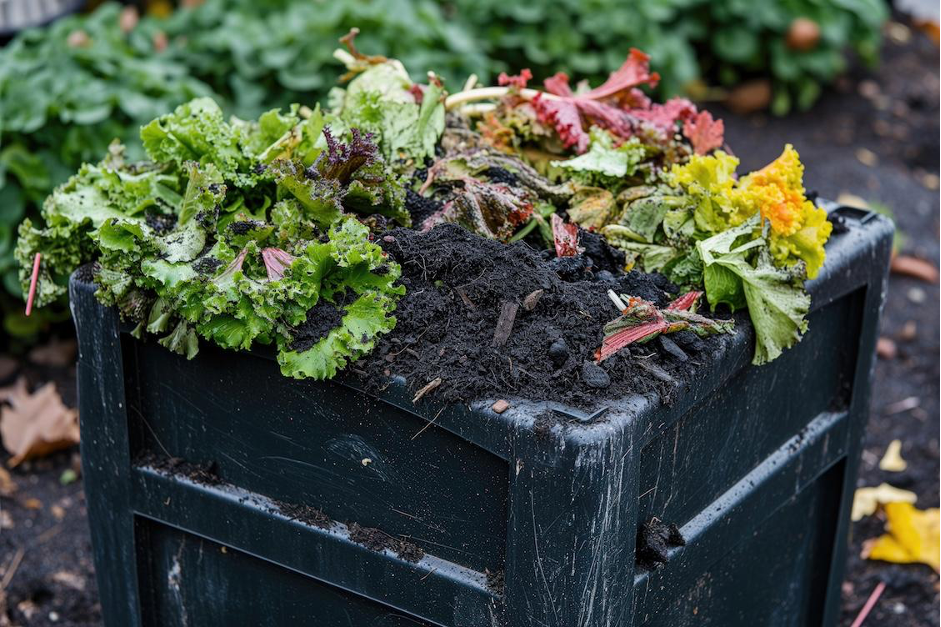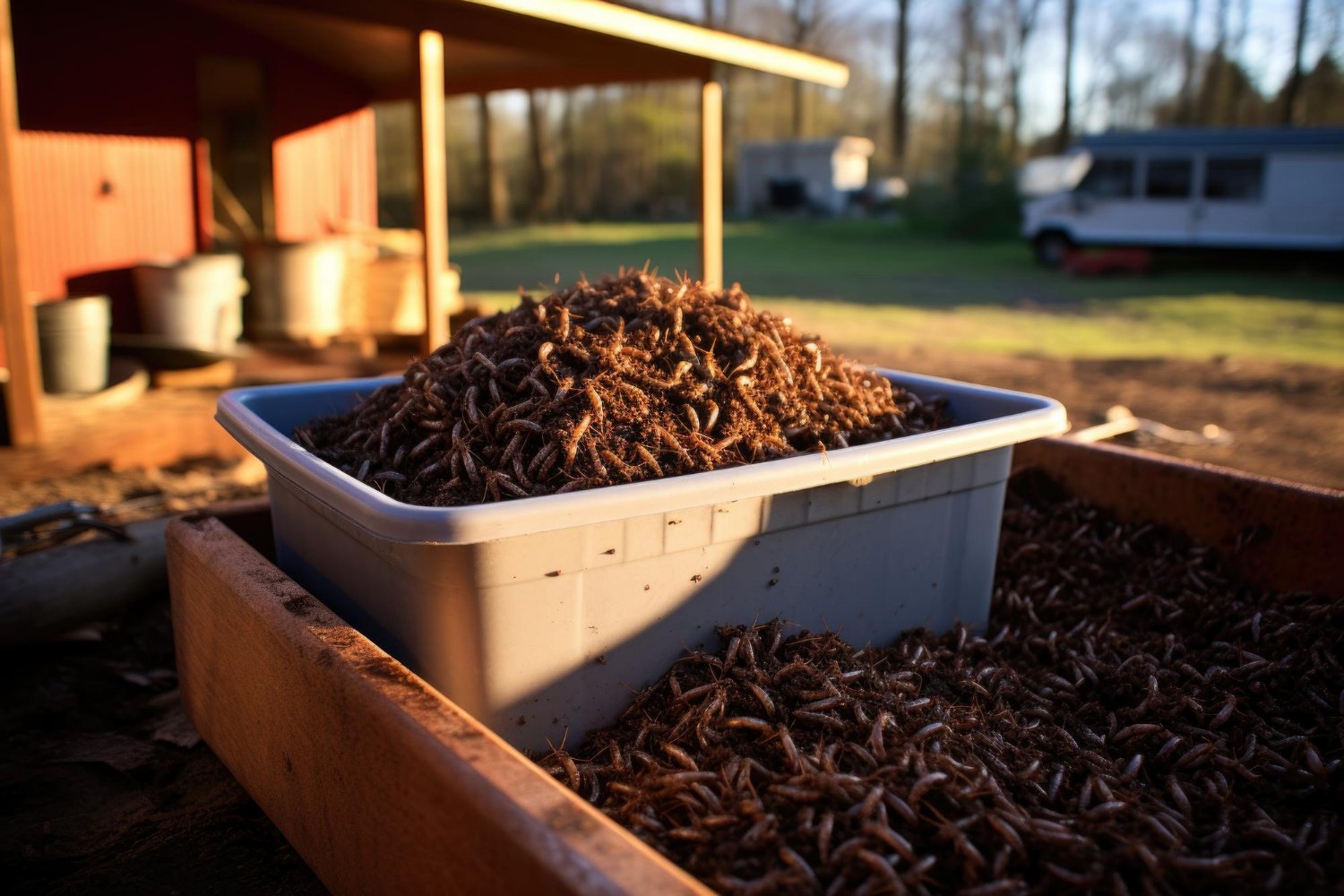 How do vermicomposting worms breathe in their bins? Why do their skins need moisture? How can we make the most of their environment to keep it airy and moist enough for them?
How do vermicomposting worms breathe in their bins? Why do their skins need moisture? How can we make the most of their environment to keep it airy and moist enough for them?
Unlike humans, composting worms don’t have noses and mouths to inhale air. Nor do they have lungs. Yet, they do breathe. In fact, their entire skin acts like lungs where they absorb oxygen into their bloodstream. And, they release carbon dioxide the same way. But that’s not all. Their skin requires moisture to breathe. Worms, like humans, are made of a high percentage of water. That’s why moisture is crucial.
The best way to take help your worms breathe is to use the following time-tested practices:
Worm Bin Basics
Having a properly sized container helps your worms thrive in their environment. When your worms thrive, they eat table scraps which is how humus is made. Humus is natural organic fertilizer that you can use on your gardens, lawns, and potted plants. We recommend that the worm bin has a depth of at least 12”. Give your worms ample room to move around. Allow room on top for the fertilizer that the worms will add. Worms are tunnelers that eat their way through bedding and the food scraps you add. The tunnels left behind provide air flow. Tunneling produces lighter and fluffier soil which contributes to even greater airflow. Compacted bedding is stifling and suffocating.
Worm Bin Air and Moisture ABCs
The best way to measure moisture is by squeezing a fistful of bedding. When it has the consistency of a wrung-out sponge, that’s when you know it’s moist enough. Not only should your worms have sufficient moisture, but you must also protect them from over-saturation. Too many wet scraps, such as watermelon, can make the bin too moist. A wet bin may naturally occur if your worm bin is outside and subject to rain. A solid lid or even a loose burlap or tarp cover is warranted. Or, place your worm bin under shelter, such as a shed or awning.
Drainage is important for the worm bin. If there’s too much water, the tunnels fill up. Worms need air and may suffocate in a wet bin. Excess moisture can also lead to foul odor. The simplest remedy for drainage is to make sure there are drainage holes in the worm bin. Tray-based composting bins usually have a spigot to release accumulated moisture. Other types of worm bins can be rested on top of bricks, PVC piping or blocks to allow water to drain away.
Tray-based, stackable worm bins are highly recommended. The first tray will have the appropriate amount of bedding, worms, and food scraps. When this tray is full, add another one on top with bedding alone. The top one then becomes the tray where you dispose of your food scraps. Worms will naturally gravitate to this tray. The trays below will then contain organic fertilizer. Apply the organic fertilizer to improve the soil on your property. Check out Uncle Jim’s Worm Farm supply inventory for these types of worm bin trays.
On the flip side, worms are highly sensitive to light and heat. Even though they don’t have eyes, they don’t like the light. Should your bin be outside, make sure to shelter it from sunlight as well. In winter, bins can be brought indoors or insulated to protect the worms from freezing temperatures. See more info about worms in the winter.
A Note of Caution
Periodically check drainage and bedding to ensure that the worm bin has sufficient ventilation. Do you smell foul odors that resemble rotten eggs (sulphur), ammonia or garbage? They are a signal that your worms are ill and may be dying from lack of oxygen. You should address this problem immediately. Add fresh bedding and remove any malodorous materials. This will help your worms get healthy again in their oxygen-rich and moist environment. Learn more about how to dry out a wet worm bin and tackle bin odors.
For additional information, check out our other blog articles on this website.
Uncle Jim’s Worm Farm is the #1 supplier of composting worms and supplies in the USA. All our worms are born and bred in the USA at our farm in rural Pennsylvania. We recommend Red Composting Worm Mix for composting, and Super Reds (European Night Crawlers) for composting, fishing, and releasing into the garden.









4 thoughts on “Vermicomposting Worms, Breathing, and Worm Bins”
Lots of what looks like great info on worm farming. Does the Frog thingy actually produce compost for use in garden or just some tea while we raise zillions of happy worms(to add to compost piles outside someplace else? I’m confused by what I’ve read here. I’m wanting to produce compost. Thanks!
I received my worms around April first and was very pleased with it. I immediately put them into shredded damp newspaper along with the shipping peat moss and some food. They were quite happy. It’s been 6 weeks and I checked them today, There’s maybe half as many worms it seems. The bedding was dryish/damp. There was food in there that had been there a week or more. There were all over the banana peel, and there was some carrot peels. I used the 3-box system. I’m a little worried that they are not happy, not multiplying and some must have died. I have them in my garage breezeway where it’s been warm, not hot, out of the sun, and a few really chilly nights (low 40s). I’ve tried to take care not to overfeed. What am I doing wrong? Switched bins today and put new bedding and banana peels in top.
Great article and timely. I am not adding enough water for my worms.
I received my worms about 1 month ago 2000 red worms 500 night crawlers I put them in my outside manure pile of aged horse poop which had turn to dirt and of course my daily feeding of scrapes. My pile is 5 feet by 5 feet by 4 feet high. I live in California and the average temp right now is 80-90 degrees I have a sprinkler on the pile starting at 7:00 pm for 15 minutes a day the pile is moist not wet.I also added some fish heads and bodies from our ocean fishing scrapes after filleting the meat off.Should I also be adding Corn Meal for food as well? The scapes and coffee grounds are from a family of two. I do have lots of potato bugs and some small guardner snakes when I have turned the pile with the tractor. When I reach my hands in I find some worms being that the pile is big I’m assuming that is the reason? When you talk about worm casing I’m not sure I’m seeing them is that because my pile is to big? Or to soon? How often do you suggest I turn my pile with my tractor. My hopes were to breed enough worms for fishing and garden use I haven’t taken any out for fishing yet wanted them to multiply first.